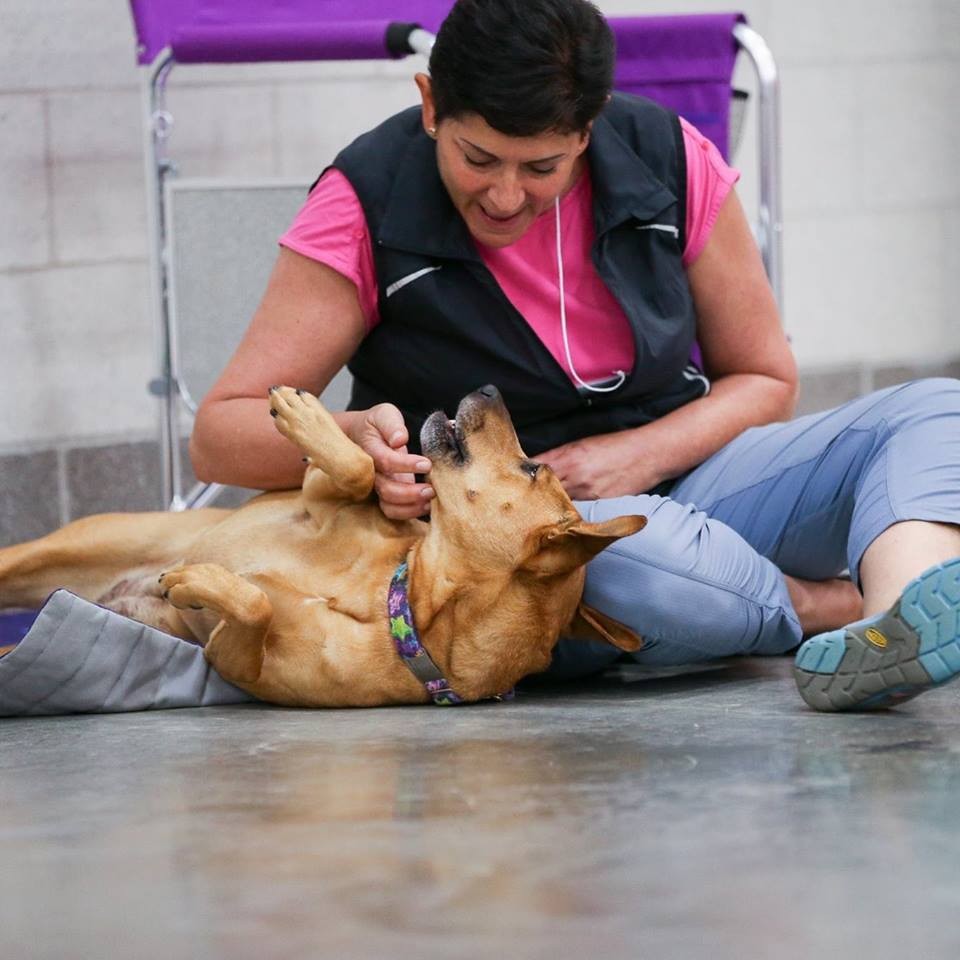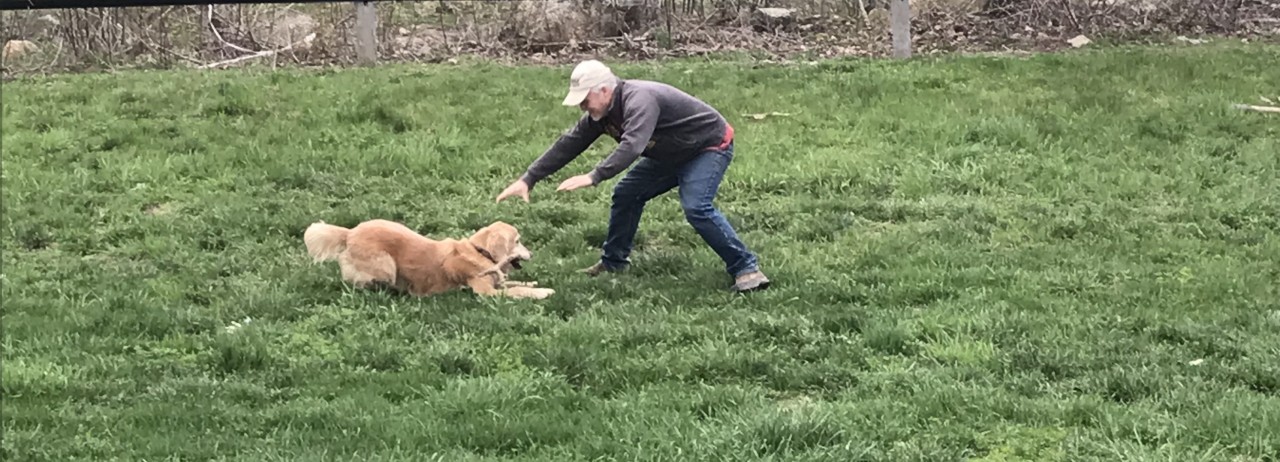The Science of Play: Playing Your Way to Success
Play is an interesting thing. Sometimes it is loose and unstructured, changing to suit the players and the circumstance; sometimes it is codified with rules, rewards, and consequences to suit the game. Even with our dogs – agility rules vary by organization and the structure of personal play changes depending on the dog and person!
Play is studied more often than most people realize and has been studied from a number of different directions – one essential work is The Genesis Of Play (2005) authored by Gordon Burghardt who carefully explored the ways play has been considered in regards to development and behavior across species. While he ultimately posits that it is not essential, nor always beneficial, he contributed some fascinating insights into play.
He established 5 criteria to define a behaviour as play "(1) it must have elements that do not contribute toward the organism's immediate survival; (2) it must be spontaneous or rewarding to the organism; (3) it must differ from strictly functional expressions of behavior either structurally or temporally; (4) it must be repeated in a similar form during at least a portion of the organism's ontogeny; and (5) it occurs when the organism is in a "relaxed field," meaning that it is healthy, sated, and not under stress from competing systems (e.g., feeding, mating, fear)." (Burghardt, 2005)
When we think about playing with our canine in this context it is easy to see that play conditions can be challenging to establish. Spontaneous play is something we often lose as we mature. Figuring out how to play can be difficult for some people.
My 2012 blog 50 Ways to Play (with your dog) continues to get many hits each year.
Playing with our dogs is good, for us, for them, and for reinforcing learning.
While I might say play should be voluntary and enjoyable there are many reasons that may not hold true for your team. Perhaps you don't know how your dog wants to play, you've never played as reinforcement for training, you don't perceive yourself as playful, there are physical challenges to the way you "expect to play," your dog doesn't play the way you or trainers expect, you are self conscious about playing, you've never had a chance to play in the way your dog most appreciates, or any other of a number of excellent reasons.
Why take the time to play?
Play has many emotional, social and physical benefits for all participants. Canines and humans alike feel better after a game, we are better able to interact with others through play and our bodies appreciate the physicality of play. Mental challenges enrich us both as well – and can tire us out. Mutual play can be wonderful.
It can also be hard work – as we learn each other's rules, preferences, and develop the ability to balance together in an harmonious dance of joy. The amount of play and the purpose of play evolves as we (all!) age and change no doubt but play is an important tool to access through our lives.
Play is a demonstrably important aspect of learning for many species. Predators learn to hunt through play, horses learn social manners through performance, children develop all kinds of skills through games, and birds learn their song through imitation and play. Creativity, and critical thinking are both enriched and enhanced through play.
Play isn't equally easy for all children nor all adults, nor dare I say it, all dogs. It is intuitive and fun for some and hard work for others. But — and this is a critical concept — play is a skill. Yes there is an element of art to it – intuition and guessing can work well in play – but there are actual definable skills that can be applied to principles of play. Play can be learned. Play can be taught.
The different forms of play (and the skills involved!)
When our golden Sampson arrived in our lives, he was 5 months old and only knew how to play keep away. If you valued something, he grabbed it and ran. And ran. Playing interactive games was not in his wheel house. I am exaggerating less than you might think to tell you that 10 years later he lives to play with my husband. Fetch, chase, tickle, hide and seek – all games they happily play together.
If our dogs see the sports we play as games, their motivation to work is high and their attitudes are a delight to observe. Smiling faces, wagging tails and dancing steps, or joyous running, are all likely to make an audience grin along with you. Learning to play with your dog will enrich your life, and your dog's. It may add Qs or points to your competitive life – but more importantly it's FUN!
Scott G. Eberle wrote about play in 2014 in the American Journal of Play. He posits that play is elemental. Play changes, adapts and can be any single piece of what his model considers the elements of play. There is a non-play opposite to each of his elements – which to me suggests that play is a spectrum. For example, one doesn't have to be fully surprised by play – but you don't want to be shocked or horrified by someone's game. With a somewhat fearful, somewhat feral dog like our Dora this is a critical concept. Sampson the golden and my husband Tom, play very differently to the way Dora and I play.
Eberle's elements of play include:
Anticipation - the delight in getting ready to play. Sally's eyes light up when I make "grabby hands" at her – she knows the game is ON!
Surprise – the laughter and handicapping we often use to play with others.
Pleasure – in many ways an amalgam of the other elements, pleasure is what brings us back to play again, and again, it is the delight in a familiar game or the thrill of a change.
Understanding – the emotional insight of play, skills can be built through this element, as can our empathy and sense of relationship with our play partners.
Strength – this "dividend of play" is where the reward lies. Here is where we can find control and mastery of the game. This is where play as reward and reinforcement becomes more than a simple pleasure but a powerful tool that we can rely on to build behaviors that we want.
Poise is the combination of strength (skill) and understanding of the benefits of play to relationship. A state of "flow" might be another way to look at this final element. All the pieces fall into place and the power of play is unleashed.
Within each of these elements are skills that can be learned, and improved. For you. For me. And for our dogs.
Let's consider the element of surprise as an example. The first time I used food in a playful way with Yen, our smallest dog, rather than a predictable delivery to her mouth? Her eyes nearly fell out of her head. In fact she wasn't sure chasing food was allowed in her rule system. Now she can chase food, catch food, use a bowl or enjoy "room service" a la Hannah Branigan.
Getting creative, learning about principles of play for dogs and humans – where things are similar and where they are different will enhance your ability to play together.
It builds human play skills (which will enhance dog play skills too) by breaking down what play is for humans, why it matters and further considers strategies to enhance play skills for people. Toy, personal and food play will all be assessed particularly in light of individual gold team differences. Humans have a huge responsibility for play in terms of training – and sometimes that inhibits play. Sometimes play isn't working quite the way we want or expect. Let's break it down and look at the big picture together! When, why and how to use play and when to call it quits with grace, when is play too stressful and what to do instead are also some of the topics we consider. My dogs are already enjoying working in the course and it hasn't started yet! I'm looking forward to getting creative, laughing and figuring out play with you and your partner! Hope you can join any one of the great play classes this term!
By accepting you will be accessing a service provided by a third-party external to https://www.fenzidogsportsacademy.com/

